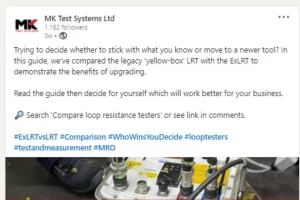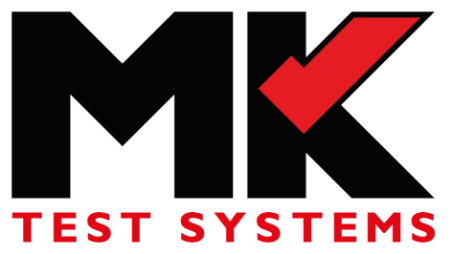LRT innovation – proof that progress is vital

A recent response to one of our LinkedIn posts has sparked the idea for this blog article. The post started a debate on the importance of innovation; something which is central to our business.

Here’s the post that sparked the debate. It was promoting the benefits for aircraft maintenance facilities (MROs) to upgrade their existing LRT tool to our ExLRT version. It led a reader to respond with the comment “sometimes it’s best to stick with what works”.
It was pointed out that “sticking with what works” is a very different concept to “sticking with what you know”, which was the sentiment of the original post. However, it’s questionable whether there are benefits of either of those statements most of the time, for most businesses.
To innovate is to introduce changes and new ideas. In the sectors we work in – aerospace, defence, rail – that can sometimes be challenging, but it’s ultimately essential.
Innovation is written into our company mission statement; around half of our Engineering and Software staff work on NPD or continuous product improvement on a daily basis.
How a safe mindset hinders innovation
 One of our suppliers joined the LinkedIn debate with a great point – that “sticking with what you know” hinders innovation.
One of our suppliers joined the LinkedIn debate with a great point – that “sticking with what you know” hinders innovation.
Chris Howsam is the founder of Hillside Product Design, a product design consultancy. He knows a thing or two about the importance of innovation and progression of product design. He’s expanded on his point of view for us here:
“It’s best to stick with what you know” – that became a point of discussion for me in a recent LinkedIn post.
Whilst I could see what the author of the comment meant, I felt it needed a response. After all, the purpose of my business is to assist my clients with things they might not know. Our role is often as much about redesign as it is about new product development design, and our clients rely on our expertise to make this as seamless and as successful as possible.
Over the years my team and I have helped many companies across a wide range of industries to develop and engineer innovative products. Some of these have been new incarnations of commercially successful products already in the marketplace. One that always stands out for me is the ExLRT loop resistance tester.
LRT innovation
We were appointed by our client MK Test Systems to be the mechanical design team responsible for developing the three-dimensional form of their new Bond & Loop Resistance Tester (BLRT). They recognised that there was a great opportunity to improve the ergonomic, aesthetic, and mechanical aspects of the new version of the BLRT product. The result of our collaboration is that the BLRT product has become the ExLRT and is approved and used by the Boeing Company.
MK Test recognised that they needed to innovate to stay ahead of the game and I am certain that will pay dividends.
“Sticking with what you know” not only hinders innovation but it puts you on the back foot and opens the opportunity for you to be outsmarted by your competitors.
So, if you are a business repeatedly treading the same ground – you know you can probably improve your product but it’s performing satisfactorily in the marketplace – and you don’t really know how or even if you wish to change it – the chances are a product design company can offer a fresh perspective and answer that conundrum for you.
Chris Howsam, Hillside Product Design
Summary
It’s understandable that MRO facilities can be reluctant to change to new tools – it’s tempting to stick with what the operators know. But newer tools and technology usually exist for a reason – they have made life simpler. They are often easier to use, or faster. ExLRT is an example of LRT innovation – and it brings both of these benefits.
The time taken to learn to use a new tool will usually outweigh the time wasted by continuing to use an older, inefficient tool.
Learn more about ExLRT here, or visit our blog and filter for ExLRT for more in-depth content.
